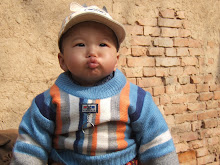
The yoga postures (Asana) allow us to meditate on the body and gain a profound understanding and knowledge of its nature. Intellectual growth in the mind and strengthening and expansion of neurological connections serve us in the spiritual quest of unity and illumination. Yoga Asana can also be destructive when done without proper guidance. It is easy to hurt the spine and inflammation caused by over stretching over a prolonged period of time can lead to all kinds of problems including physiological imbalance, autoimmune responses, anxiety and much more. Practice light and gently when performing Asana to prevent a negative response. Seek out a good teacher that pushes you harder in meditation than in Asana and your practice will lead to health and illumination.
When holding a yoga posture, make sure you can breathe slowly and deeply, using Dirga or Ujjiayi Pranayama. Go to your edge in the posture, holding where you feel a good stretch and/or your body working, but don‚t feel pain, strain or fatigue. If you have not practiced yoga postures before, please read our beginner's guide.
Doing the Yoga Poses requires you to have your own yoga kit and to study each pose and execute it slowly as you control your body and your mind. Read on and follow our free Yoga Posture animations to discover more about the different Poses in the following sections:
When holding a yoga posture, make sure you can breathe slowly and deeply, using Dirga or Ujjiayi Pranayama. Go to your edge in the posture, holding where you feel a good stretch and/or your body working, but don‚t feel pain, strain or fatigue. If you have not practiced yoga postures before, please read our beginner's guide.
Doing the Yoga Poses requires you to have your own yoga kit and to study each pose and execute it slowly as you control your body and your mind. Read on and follow our free Yoga Posture animations to discover more about the different Poses in the following sections:
Mountain Pose (Tadasana)The Mountain Yoga Pose promotes the experience of stillness, strength, relaxed power, and immovable stability associated with mountains. This Yoga posture, and coming back to this stillness after other poses, is one of the ways of becoming acquainted with stillness.
Triangle Pose (Trikonasana)In Hindu art, the triangle is a potent symbol for the divine principle, and it is frequently found in the yantras and mandalas used for meditation. The Trikonasana or Triangle Pose concludes the Yoga Postures in our basic session.
Revolved Triangle Pose (Parivrtta Trikonasana)This asana is a contrary twisted Trikonasana and is a good exercise to follow the Trikonasana. The exercise is good for your sense of coordination and sense of balance. You need a lot of concentration and precision to be able to carry it out correctly.
Crescent Moon PoseThe Crescent Moon Pose stretches and strengthens the arms and legs, increases stamina, improves balance and concentration, and can also relieve backaches. If you are suffering from diarrhea, high blood pressure or neck problems, you should take extra caution practicing this pose.
Warrior Pose I (Virabhadrasana I)The Warrior Pose I or Virabhadrasana I improves balance and agility and strengthens your legs, back, and arms. It also targets the chest, shoulders, neck, and abdominal area. Learn how to do the Warrior Pose I in this section.
Warrior Pose II (Virabhadrasana II)This posture strengthens your legs, back, shoulders, and arms, building stamina. It opens your hips and chest, and improves balance. It is called the Warrior in reference to the fierce warrior, an incarnation of Shiva. Learn how to do the second Warrior Pose in this section.
Warrior Pose III (Virabhadrasana III)Warrior Pose III is the third variation of Virabhadrasana. This pose helps improve balance and stability while strengthening your ankles and legs. As with all other poses, make sure to perform it correctly to achieve optimum results. Learn how to do the Warrior Pose III in this section.
Wide-legged Forward Bend (Prasarita Padottanasana)This is a good stretching exercise that reduces the stiffness, tiredness and tension in the muscles in your hind legs. At the same time, the muscles of the back and the neck are thoroughly stretched and you learn to deal with possible stretching aches.
Chair Pose I (Utkatasana I)A strong straight lower back is the foundation of every correct position. In doing the Chair Pose, you strengthen the lower back and the legs and by doing so, you create more space in the chest and belly. Check out this section and learn how it is done.
Chair Pose II (Utkatasana II)Unlike in the Utkatasana I, the Chair Pose II involves bending the upper body from the hip until it becomes parallel to the floor. Learn how to perform the Chair Pose II in this section. You can use our animation as your guide as well as our easy-to-understand steps.
Doing a Standing Forward Bend can completely stretch your upper and lower back as well as your calf muscles and legs. In addition, it can help increase the flow of brain in the brain. Know more about Standing Forward Bend in this section.






